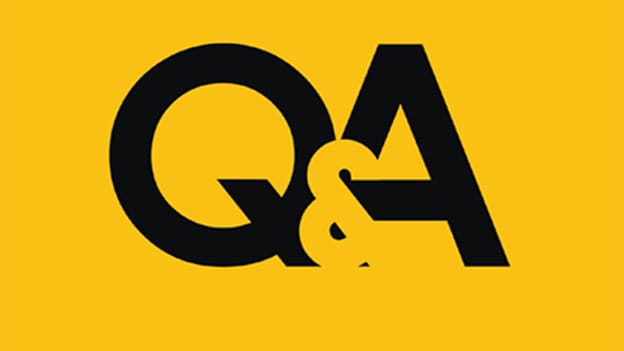How technology is helping AirAsia in dealing with talent scarcity

With a customer volume of about 19 million and with more than 10,000 employees in the company, AirAsia has a lot of business and talent challenges to deal with. In an interaction with People Matters, Ashish Ashdhir, Group Head- Global Talent Acquisition, AirAsia shares how technology plays a crucial role in dealing with these challenges and talks about the talent attraction tools and techniques being employed by the low-cost airline.
As ‘Talent Scarcity’ remains a global challenge for businesses across industries, in what spectrum does it put ‘Talent Acquisition’ as a function?
If you look at the index on the most popular jobs or the most in-demand jobs in the industry, roles in data sciences, UI, UX, Codec and Software Engineering are the top four-five jobs across industries. Whether it is biotech, medical devices, airlines, transport company – they are all looking to ramp up their tech and digital capability, therefore creating a high demand for digital skills. While there are some markets where the ‘demand-supply dynamics’ for these skills is leveled, there are other markets and geographies where there is a huge skill gap. As all the industries are competing for the same skill sets, the entire market is becoming candidate driven, the current and potential employees become the focal point of every talent acquisition decision and strategy.
How is AirAsia dealing with the challenge of talent scarcity?
AirAsia being a popular brand has not had much difficulty in attracting talent. We hire about 5,000 employees in a year, that means that we receive more than 25,00,000 applications every year. So that is a lot of applications to review, screen and shortlist. To rely entirely on recruiters to hire the best is not a wise decision. Therefore, our focus has been on digitizing our efforts and work on our go-to-market strategy and our outreach approach.
We have implemented Workday as our recruiting system and that has certainly helped us manage our application flow and our applicant pool better. It has helped us in devising some preliminary questionnaires to help us churn out irrelevant talent. Now, we are also looking at a solution that will help us in making our recruitment decisions more proactive. Screening the applications is only one part of the challenge. The other side of it is- what if from these thousands of applications we are unable to find anyone. So it’s a needle in a haystack kind of scenario, which is why we need a technology that helps us identify and reach the passive candidates who are most relevant for us. Considering the size and scale of the company that we are, we still have a long way to go to completely solve the problem but we are on the journey.
Right now we are in the midst of piloting an AI-based solution with the help of which we can pre-screen candidates and stack rank them based on their competence and skills and also match them to do job descriptions.
We want to make sure that we are in a position to get the best of the best forward by leveraging technology and not just a recruiter’s capability.
What has been your recruitment strategy in recent years? What are some talent attraction tools and techniques that you are using currently?
Firstly, in AirAsia, we focus on value-based assessment. For every interview, we look at some basic behavioral competencies such as learning agility and value agility. Secondly, for every interview loop, we have clearly defined focus areas and with a defined panel of interviewers; we ensure that people going into the interview already know what are the areas they have to assess. This preparation makes the entire process a more seamless and also ensures clear accountability in terms of how the candidates are being assessed and how AirAsia is represented.
As today we live in a candidate-driven market, our next focus was on changing our approach from just saying that ‘we are the best-in-class employer’, to highlighting elements that would be appealing to the candidates. Therefore, we worked on building strategies for providing a good candidate experience.
To begin with, we introduced a prep interview document to make sure that candidates have full visibility about how the interview process is likely to be, where are the offices located and what to expect on the day of the interview. We have also initiated candidate surveys and hiring manager surveys to identify the areas where we have faced the biggest gaps, in terms of the candidate qualification, candidate engagement, candidate conversion and closure. These elements are also helping us in holding our recruiters accountable and helping AirAsia be more forthcoming in our approach.
Two crucial elements for us as a company are:
- Our ability to be able to provide opportunities for our internal staff and make sure that all our jobs are advertised internally.
- To make sure that all our external applicants receive responses when they submit an application to us, which is where technology will play a key role for us.
What are some challenges that you faced while revamping recruitment strategy? How did you overcome these challenges?
Change is never easy. But when it comes to introducing or implementing new solutions and strategies, the proof is in the pudding. People don’t accept anything unless they witness or experience its positive impact. Therefore, we did some trial cases and pilots to show the success and that is what drove better and broader adoption.
What will be AirAsia’s priorities or focus areas in ‘Talent Acquisition’ in 2019?
I think most of the challenges from 2018 will continue because these are all a prelude of what has happened over the last few years. When I think of the journey, I realize we did not even have an ATS when I came in. We worked on the entire design and revamped our entire process.
Since then we have implemented Workday and are now working on implementing automation tools to leverage analytics and use data to make our business case. We are in this super hyper-growth phase where we are also looking at making work easier for recruiters and hiring managers.
The most critical challenge that will continue to remain is attracting the right talent. We may find tonnes of developers in Singapore, Indonesia, Thailand as well as in India but it’s about ensuring that these people are the best fit for the company. To serve our 19 million passengers and to be able to give them the most seamless experience we need strong internal people capabilities in our company.
















